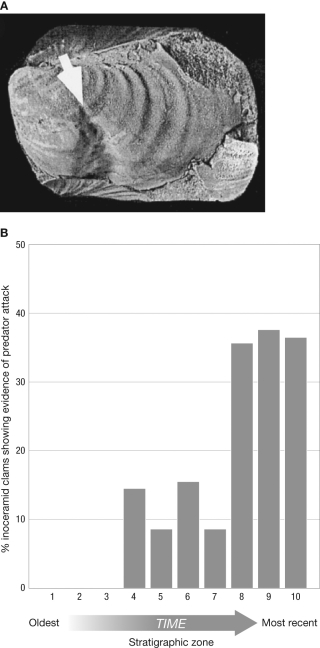For much of the Cretaceous, bivalves belonging to the Inoceramidae were among the most prominent bottom dwellers in aquatic communities, but then declined at the end of the Cretaceous, eventually going extinct. What does the figure tell us about the reason(s) the inoceramid species went extinct? 
A) Shell deformities observed in fossils indicated a significant change in the chemistry of the oceans, which likely led to the extinction of the Inoceramidae.
B) Shell deformities observed in fossils indicated a significant increase in ocean temperature, which led to malformation of shells during development, causing the subsequent extinction of the Inoceramidae.
C) Shell deformities observed in fossils indicated a significant increase in predation, which likely led to the extinction of the Inoceramidae.
D) Shell deformities observed in fossils are difficult to interpret and could result from many factors.
Correct Answer:
Verified
Q4: Elevated levels of iridium are found in
Q5: Extinction of a species means that
A) all
Q6: Which of the following observations would be
Q7: What particular trait made it more likely
Q8: A native species of wildflower belonging to
Q10: The graph shows the extinction rates for
Q11: The figure below shows the increasing morphological
Q12: The graph shows extinction rates for families
Q13: Which of the following is the greatest
Q14: Native plant A is endangered. You suspect
Unlock this Answer For Free Now!
View this answer and more for free by performing one of the following actions

Scan the QR code to install the App and get 2 free unlocks

Unlock quizzes for free by uploading documents